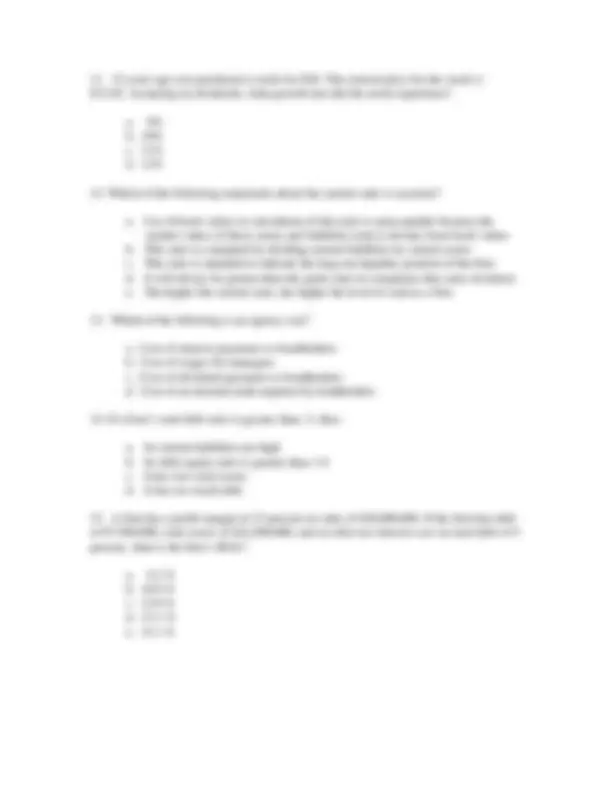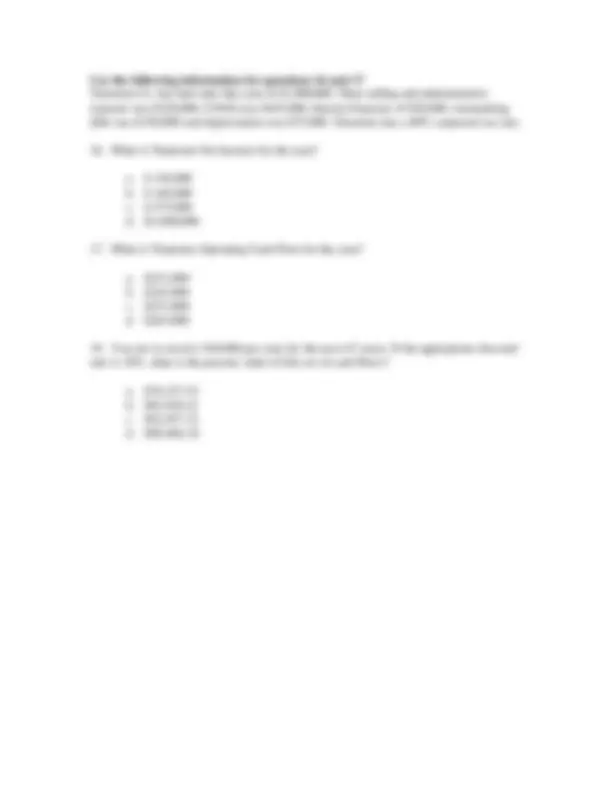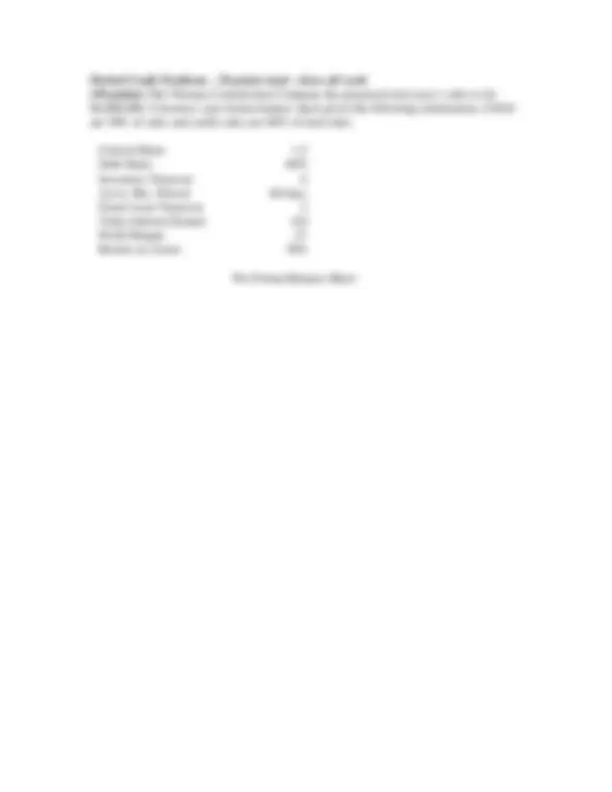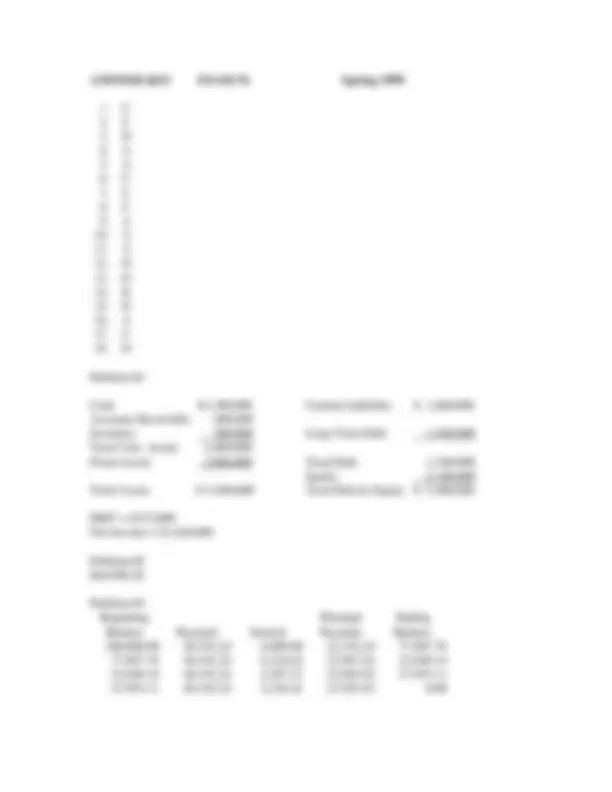







Study with the several resources on Docsity

Earn points by helping other students or get them with a premium plan


Prepare for your exams
Study with the several resources on Docsity

Earn points to download
Earn points by helping other students or get them with a premium plan
Community
Ask the community for help and clear up your study doubts
Discover the best universities in your country according to Docsity users
Free resources
Download our free guides on studying techniques, anxiety management strategies, and thesis advice from Docsity tutors
Multiple choice Questions with Answer Section for Exam 1.
Typology: Exams
1 / 9

This page cannot be seen from the preview
Don't miss anything!






Finance 300 Exam #1 Spring 1999
Multiple choice - 4 points each - 72 total points – PUT ALL ANSWERS ON ANSWER PAGE
a. Easier access to raising capital b. Limited liability c. Double taxation d. All are advantages for a corporation
a. NYSE b. NASDAQ c. primary market d. secondary market
a. interest rates are expected to remain stable b. the cash flows occur no more than one year from each other c. high rates of interest can be earned on the cash flows d. the cash flows have been discounted to a common date
a. 8% b. 10% c. 12% d. 14% e. 16%
a. Maximizing market value of the company’s shares. b. Maximizing the company’s market share. c. Maximizing the current profits of the company. d. Minimizing the company’s liabilities.
a. $11,409. b. $11,579. c. $13,841. d. $13,960.
a. increases, increases b. increases, decreases c. decreases, increases d. decreases, decreases
a. $11, b. $12, c. $14, d. $16,
a. $ 496 b. $ 770 c. $1, d. $1,
a. Firm A b. Firm B c. they are both the same d. not enough information available to tell
Use the following information for questions 16 and 17 Timmons Co. has had sales this year of $1,000,000. Their selling and administrative expense was $220,000, COGS was $425,000, Interest Expense of $20,000, outstanding debt was $150,000 and depreciation was $75,000. Timmons has a 40% corporate tax rate.
a. $ 156, b. $ 168, c. $ 575, d. $1,000,
a. $231, b. $243, c. $251, d. $263,
a. $78,157. b. $82,928. c. $92,457. d. $98,866.
Partial Credit Problems - 28 points total - show all work (10 points) The Thomas Construction Company has projected next year’s sales to be $6,000,000. Construct a pro forma balance sheet given the following information. COGS are 50% of sales and credit sales are 60% of total sales.
Current Ratio 1. Debt Ratio 60% Inventory Turnover 6 Accts. Rec. Period 60 days Fixed Asset Turnover 2 Times Interest Earned 8. Profit Margin. Return on Assets 30%
Pro Forma Balance Sheet
(8 points) Construct a loan amortization loan for a four year loan of $100,000 with an interest rate of 8% and equal payments each year.
ANSWER KEY EXAM #1 Spring 1999
Problem #
Cash $1,300,000 Current Liabilities $ 1,600, Accounts Receivable 600, Inventory 500,000 Long Term Debt 1,640, Total Curr. Assets 2,400, Fixed Assets 3,000,000 Total Debt 3,240, Equity 2,160, Total Assets $ 5,400,000 Total Debt & Equity $ 5,400,
EBIT = $375, Net Income = $1,620,
Problem # $64,990.
Problem # Beginning Balance Payment Interest
Principal Payment
Ending Balance 100,000.00 30,192.24 8,000.00 22,192.24 77,807. 77,807.76 30,192.24 6,224.62 23,967.62 53,840. 53,840.14 30,192.24 4,307.21 25,885.03 27,955. 27,955.11 30,192.24 2,236.41 27,955.83 0.